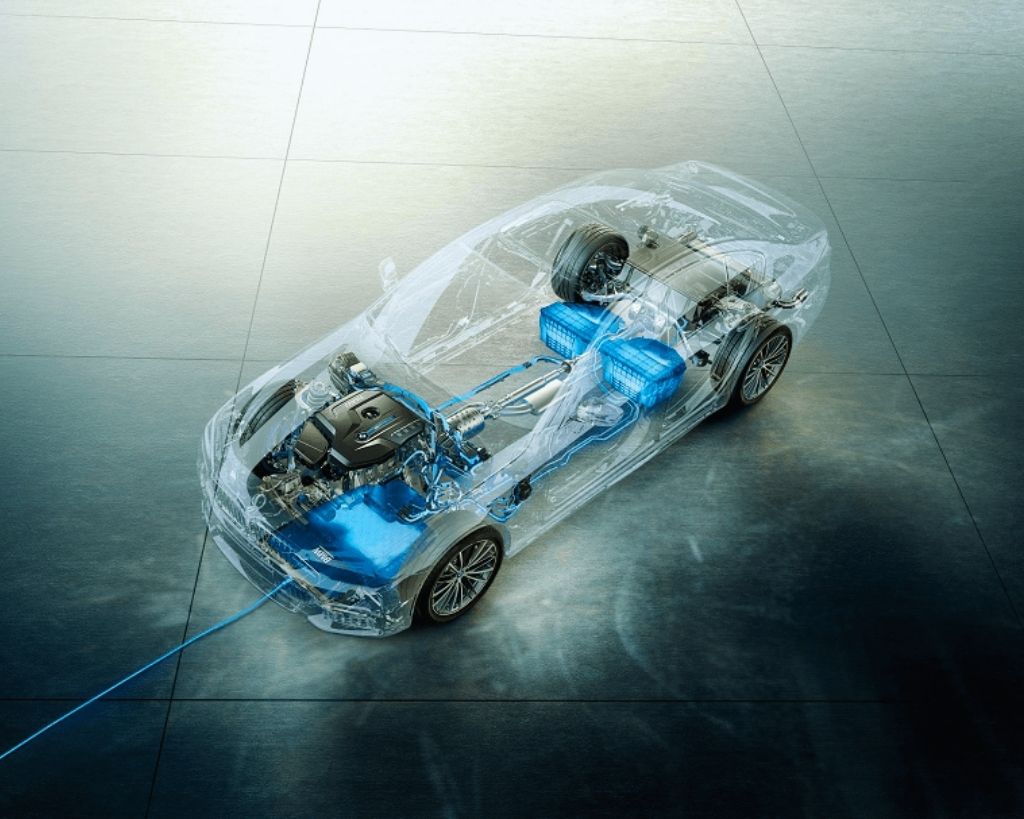
The inductive charging of e-vehicles promises uncomplicated electromobility. Until now, the systems could only be set in terms of their charging capacity. A process for which a patent has been applied is intended to change that.
The “Concept EQ” from Mercedes-Benz already mastered inductive charging in 2016. Edge has now applied for a patent for a new process.
Five degrees, drizzle, a charging station, and a wet, stubborn charging cable that has to go back into the trunk: Electromobility is not always elegant. That is why there are always projects in which developers research inductive charging. That means: drive the e-vehicle over a charging coil, done. A transmitter coil on the floor and a receiver coil in the vehicle, much like charging an electric toothbrush.
That could weaken the subjective impression of constantly standing at a charging station.
The systems are there; car manufacturers have produced prototypes or small series; the systems are hardly visible in daily life. Too little charging power, too much power loss, and the design effort have slowed down enthusiasm so far.
The development service provider “EDAG” has now applied for a patent for a concept intended to solve these difficulties at least partially. To this end, development engineer Jochen Rohm and his team have relocated the charging intelligence to the vehicle in the “LaneCharge” project. The technology embedded in the street is correspondingly simpler and more robust than before. The charging electronics regulate how much power they take from the transmitter coil individually for each e-vehicle.
Also Read: How Fog Computing Makes Production More Stable And Safer
Regulate Charging Power Individually
This means: “A single electronic assembly can supply several transmitter coils on the street side, while each vehicle controls the energy consumption from its transmitter coil itself; without real-time communication,” explains Rohm. This saves resources and lowers the costs for the infrastructure.
In previous inductive processes, the transmitter coils could not be individually regulated; the transmitted power of all locks was set to the vehicle with the lowest charging requirement. In addition, primarily WiFi-based real-time communication was necessary for the control.
More Constructive Effort In The E-Vehicle?
Does the concept only shift the design away from the road and into the car? “If the system is already provided in the concept phase of vehicle development, there is no significant additional effort compared to conventional concepts with primary-side control,”. “With small software adjustments, our system is also compatible with systems that are regulated on the primary side.”
The fact that the development of vehicle platforms for e-vehicles is already very far advanced at most volume manufacturers is also not a disadvantage: “We expect that the “inductive charging” option will be added in many cases with the evolution of the existing platforms. With next-generation platforms, we expect a very high degree of penetration of this charging technology from the outset,” confidently. And: “Our system is designed as a ‘minimally invasive’ retrofit solution. This enables them to be incorporated into fully designed BEVs with a conductive charging interface. “
The first tests of the system are to take place at the University of Hanover. From 2023, the project partners want to use the procedure at the taxi stand in front of Hanover Central Station. “However, the system is suitable for all cars.” with a conductive connection. That means: sender and receiver are physically connected to each other.
Charging Power As At A Household Socket
And what about the charging and power loss? “We are currently achieving an efficiency of 95 percent for DC-DC charging with up to 3.6 kilowatts per vehicle,” describes Rohm. This is not precisely fast loading. It is conceivable, for example, to equip parking spaces with appropriate systems.
One scenario could then be that the e-car is charged while shopping, and there is no need to fiddle around with charging cables. That could invalidate the subjective impression of constantly standing at a charging station. The project partners are pursuing a similar approach with the planned tests with taxis, which are regularly and plannable at fixed places.
Developers are exploring another possibility in the “E-Charge” project. Entire street sections are equipped with inductive charging technology; the e-vehicles would be charged while driving.
What Is The “LaneCharge” Project?
As part of the “LaneCharge” research project, Edge, the University of Hanover, the Technical University of Braunschweig, and Sumida Components & Modules are developing a concept for an overall charging system e-taxis. The project is funded with just under 2.8 million euros; within the framework of the funding guidelines for electromobility of the Federal Ministry of Transport and Digital Infrastructure. The procedure is coordinated by Now GmbH and implemented by Project Management.





